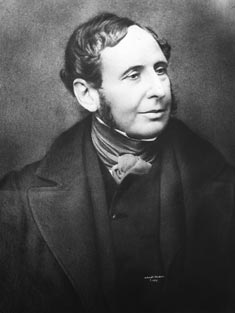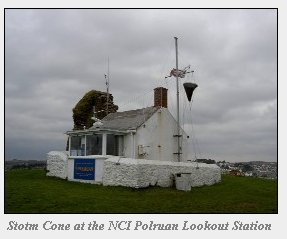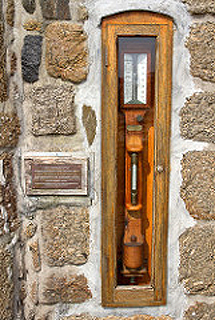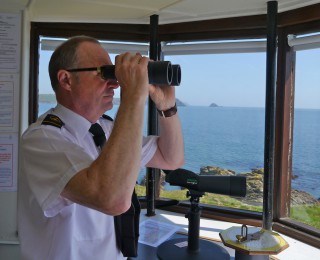‘Sailing By’ Or ‘A Red Sky At Night’
 ‘Bailey, Hebrides Fair Isle… North West 6 becoming 7 or 8 later. Rough or very rough. Rain showers. Moderate, occasionally poor in showers’. I reached across to turn the radio off and we settled down for the night, resigned to the fact that we would not move tomorrow and grateful for the shelter of this Scottish Loch.
‘Bailey, Hebrides Fair Isle… North West 6 becoming 7 or 8 later. Rough or very rough. Rain showers. Moderate, occasionally poor in showers’. I reached across to turn the radio off and we settled down for the night, resigned to the fact that we would not move tomorrow and grateful for the shelter of this Scottish Loch.
The late night weather forecast, introduced by that haunting tune ‘Sailing By’, an essential piece of listening for all sailors, in big ships or small, that governed our lives. True, nowadays all commercial traffic would get the information by Navtex in digital form but, I suspect, many radio operators will still listen in out of nostalgia.
It is amazing to think that up until the 1850s sailors world wide had no means of guessing what the weather would do save by the tried and tested ‘folklore’ such as the evening sky, the cloud formations, the appearance of the sea – even which way the birds were flying. These were surprisingly accurate but limited to no more than a few hours ahead. Of course at that time even if they had a reliable forecast there was no way by which a ship at sea could get the information. Radio was still in its infancy and Morse Code transmitted by radio not yet thought of.
 Then along came Robert Fitzroy. A Captain in the Royal Navy he commanded HMS Beagle on its five year voyage with Charles Darwin which left England in 1831. It was his second voyage in
Then along came Robert Fitzroy. A Captain in the Royal Navy he commanded HMS Beagle on its five year voyage with Charles Darwin which left England in 1831. It was his second voyage in
Beagle as he had been on a previous trip to make a survey of Tierra del Fuego. At the start of that voyage he was not in command but on the unfortunate death of his Captain he was appointed in his stead. He was aged 23. He already had a great interest in hydrographics and was a close friend of Admiral Sir Francis Beaufort, Hydrographer to the Admiralty, who gave his name to the Beaufort Scale of Wind, still in use today, by which wind strengths are given numbers to indicate their force.
There is a close association between weather and the effects of tides and the oceans. Fitzroy came back from his voyage having spent his time studying the effects of weather. He came to believe that by careful recording of weather patterns and observations of current conditions it was possible to have a good guess at what was likely to happen on the weather front. In 1854 he was appointed in charge of the newly formed Meteorological Department of the Board of Trade – later to become the ‘Met Office’.
Fitzroy believed that it would be possible to predict the arrival of a storm and, by giving warning to shipping, many wrecks could be saved by taking appropriate avoiding action. Between 1855 and 1860 there were over 7,000 wrecks around our coasts with the loss of over 1,700 lives! He aimed to reduce this by providing Storm Warnings which could now be transmitted countrywide by the new electric telegraph. Coastguard Stations were now fitted with masts and on these could be hoisted large black cones, point up for a northerly gale, down for a southerly, the strength of the wind being indicated by black square drums being hoisted below the cone.
The weather forecast grew out of the storm warnings as a by product. As the Meteorology Office was analysing data anyway it seemed reasonable to publish it even if a storm was not likely and he coined the word ‘Forecast’, insisting that that was what it was, only an opinion and not a prediction.
 In the Lookout we are only concerned with the ‘offspring’ of the Weather Forecast, the Inshore Waters Forecast. This is also produced by the Met Office but is a localised version, the coastline being divided up into 16 sections, the forecast confined to each section and up to 12 miles offshore. This is a service dedicated to small boat users, fishermen and those people whose activities are confined to those areas. It is broadcast at three hourly intervals by the Coastguard and we pick it up and log it for our information.
In the Lookout we are only concerned with the ‘offspring’ of the Weather Forecast, the Inshore Waters Forecast. This is also produced by the Met Office but is a localised version, the coastline being divided up into 16 sections, the forecast confined to each section and up to 12 miles offshore. This is a service dedicated to small boat users, fishermen and those people whose activities are confined to those areas. It is broadcast at three hourly intervals by the Coastguard and we pick it up and log it for our information.
At the moment, although we have our own dedicated radio channel, we are not allowed to pass it to any enquiring yachtsman, but we are allowed to display it on our window for the benefit of the public on land! The yachtsman, because he is using a radio, can only get it by speaking to the Coastguard who are the only people allowed to re-broadcast it. Such are the ways of Government.
Admiral Fitzroy, first ‘Director’ of the Meteorological Department, creator of the Storm Warnings and their offspring, weather forecasts, died penniless at the age of 60. He had exhausted his personal fortune providing barometers around the country to help sailors foretell the weather. He was convinced that not enough was done to protect their lives, endangered by going to sea when bad weather was due. A number of these barometers survive today – there is one at Mousehole, set in the harbour wall for all to see. A very sick man, exhausted by work, he committed suicide on 30th April, 1865 at Norwood in South London. As a suicide he was buried in unconsecrated ground outside the Churchyard wall.
The weather forecast is just one of the bits and pieces of information that we collate during a Watch at the Lookout. Of far more use to us are the Admiralty Tide Tables which tell us the time of high and low tides and their height. It is important to us to know what the tide is doing, rising or falling and how high or low it will be. Many people walk on the rocks and, while it is difficult in our area to get cut off by the tide, people do occasionally get into difficulty. Cliff Path walkers also find the information useful.
It is, for example, easy to walk from Pendower to Carne along the beach at half tide or lower but later than that and the sea comes right up to the cliffs. We work out the direction of the tidal flow from tables we have as it can be useful to know which direction the water is going at a particular time of day. Admittedly the tidal streams in the bays are very erratic and so weak that the information is of little practical use, but from about two miles out there can be a definite flow to the water. Of far greater use is the wind direction and force and we have a sophisticated weather display telling us what direction and how fast an object in the water is going to travel.
 If you are a swimmer in difficulties or a kayaker hanging on to your upturned vessel that is what matters. A small boat with a broken down outboard out near The Whelps is going to be very interested in the direction of his drift! We will be able to see him, plot his position and tell the Coastguard. Weather conditions will be crucial. Can he sit there on a nice calm day and eat his sandwiches while a tow is organised or will he have to paddle against the wind like a lunatic to stay out of serious trouble while the Lifeboat RHIB pulls out all the stops.
If you are a swimmer in difficulties or a kayaker hanging on to your upturned vessel that is what matters. A small boat with a broken down outboard out near The Whelps is going to be very interested in the direction of his drift! We will be able to see him, plot his position and tell the Coastguard. Weather conditions will be crucial. Can he sit there on a nice calm day and eat his sandwiches while a tow is organised or will he have to paddle against the wind like a lunatic to stay out of serious trouble while the Lifeboat RHIB pulls out all the stops.
I want to take this opportunity to thank all of those people and organisations who have generously supported us with donations, be they large or small. Over the years it has been a struggle to finance the N.C.I. locally because of our small number of volunteers and the necessity to maintain an aged lookout with no mains electricity or water. Much of the work has been done by members but materials and equipment cost money and without the generosity of donors we would not still be in existence.
It may simply be a few coins in a collecting box or a large cheque. In particular may I mention the Hidden Hut for their support at the Fish Festival and the paella evening afterwards, the Harbour Club who generously allow us to use their facilities for our monthly Meetings and hosted a social evening in July, and the Rosevine Hotel for their social evening and donation afterwards and their help with car parking.
 So you see it is not very difficult being an N.C.I. Watchkeeper. All the equipment is there for you to use and our Training Team will show you how to do it, then hold your hand until you are competent. You need to be fit enough to walk the Coast Path to the Lookout, have good hearing and eyesight, using aids if necessary, and be able to get yourself from home to Rosevine. Watches are no more than three hours at a time and we would like you to be able to give us at least two watches each month. Of course we are flexible and understand that sickness, holidays and the unexpected will affect us all. We do need more volunteers so why not give Sue ring on 01872-530500 or Chris on 01326-270681 to find out more.
So you see it is not very difficult being an N.C.I. Watchkeeper. All the equipment is there for you to use and our Training Team will show you how to do it, then hold your hand until you are competent. You need to be fit enough to walk the Coast Path to the Lookout, have good hearing and eyesight, using aids if necessary, and be able to get yourself from home to Rosevine. Watches are no more than three hours at a time and we would like you to be able to give us at least two watches each month. Of course we are flexible and understand that sickness, holidays and the unexpected will affect us all. We do need more volunteers so why not give Sue ring on 01872-530500 or Chris on 01326-270681 to find out more.
Pictures by permission of Wikipedia and Polruan NCI Station Manager

